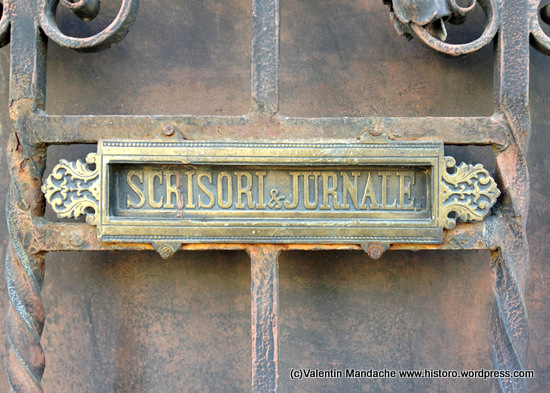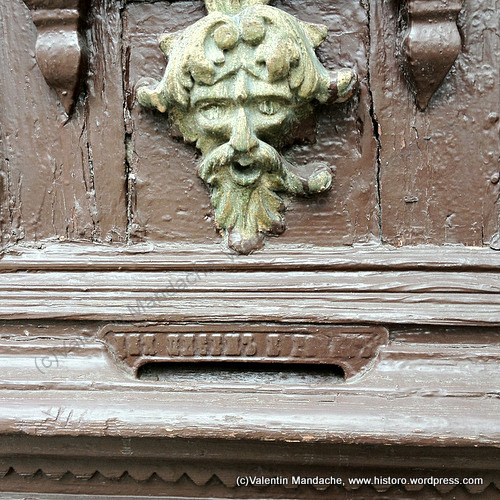I enjoy making parallels between the architectural phenomena of different places and periods, to see if I can extract interesting clues about the history and societies that produced and host those artefacts. In fact, for me, the comparatist method is a main means of investigation of the exacting and apparently chaotic built landscape of Bucharest and Romania, where there is not yet a tradition of quality architectural history commentariat and the academic literature in that field is still thin on the ground.

To illustrate that, I have here two letter boxes, their openings more precisely, dating from the La Belle Epoque period. The one above is from Bucharest, adorning a 1900s gate, inscribed on its flap with the Romanian text “Scrisori si Jurnale”, which translates as “Letters and Journals”. The one shown bellow is from Chisinau, the Republic of Moldova, is quite obscured under thick coats of paint. It reads in Russian as “Dlya Pisemi i Gazeti”, which in English is “For Letters and Journals”.
Those cities are in the same area of South East European civilization, but different historical experiences in the last two centuries, exhibiting often diverging trends in their architectural and artistic preferences, as these letter boxes testify. The Romanian one, adorning a wrought iron gate shows the popularity of this architectural element in Bucharest and the country, and the existence of front gardens, people enjoying interacting within the community, while in Chisinau the letter box affixed on a street doorway indicates the preference of houses with walls fronting the street, with intimate interior gardens, away from the peering eyes of neighbours and passerby. The Romanian letter box flap displays a sort of French inspired Beaux Arts decoration indicating the influence of the influence of that country in this part of Europe, while the Chisinau box is surrounded by Renaissance inspired ornaments, underlying the stronger Renaissance tradition and popularity of this style in Imperial Russia. The languages used to inscribe these artefacts also suggest the existence of a more cosmopolitan society in Chisnau. The very fact that this city has now a majority of Romanian speaking population, and this Russian inscription is left in its place, indicates a more tolerant attitude for ethnic diversity than the nowadays boringly mono-ethnic Bucharest.
There are many other interesting architectural and historic fact than can be drawn by comparing these two simple letter box openings, showing the usefulness of this research method in less documented and talked about places like Romania and the Republic of Moldova.


